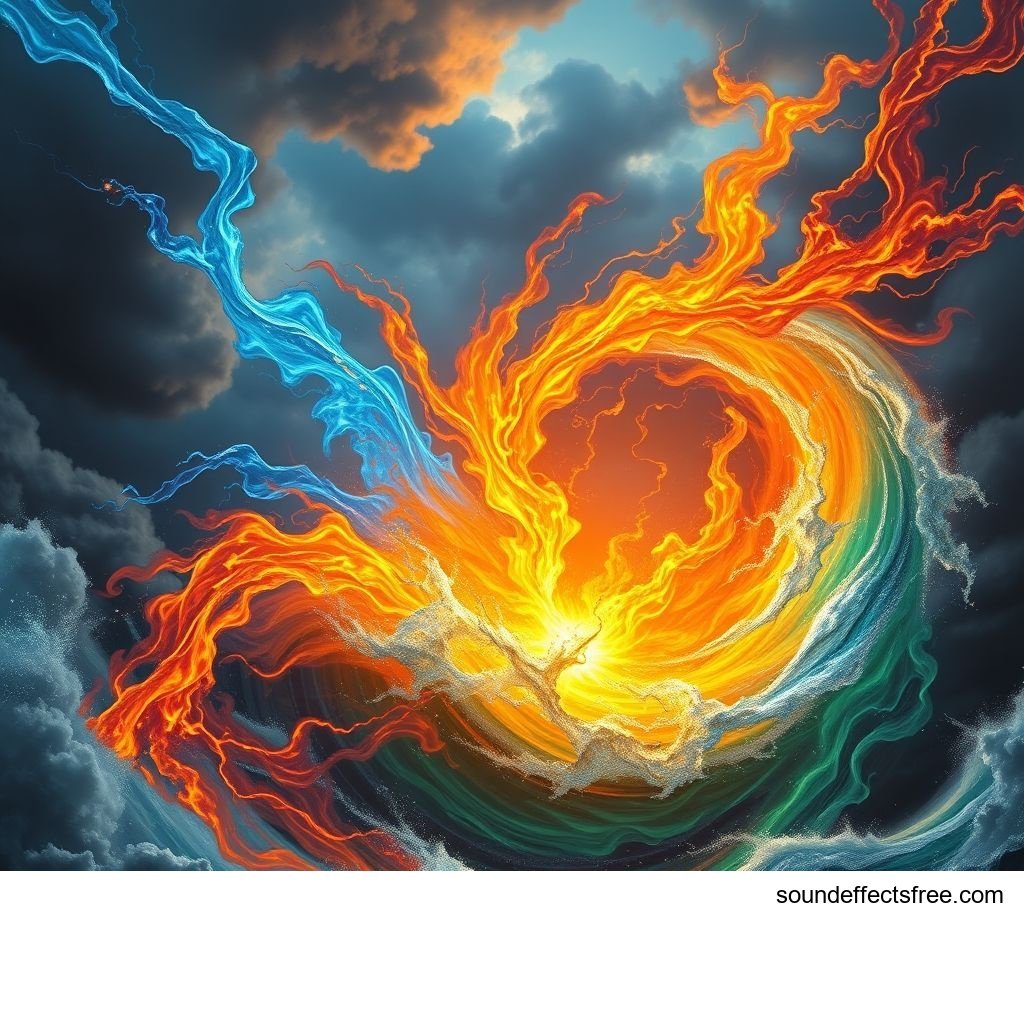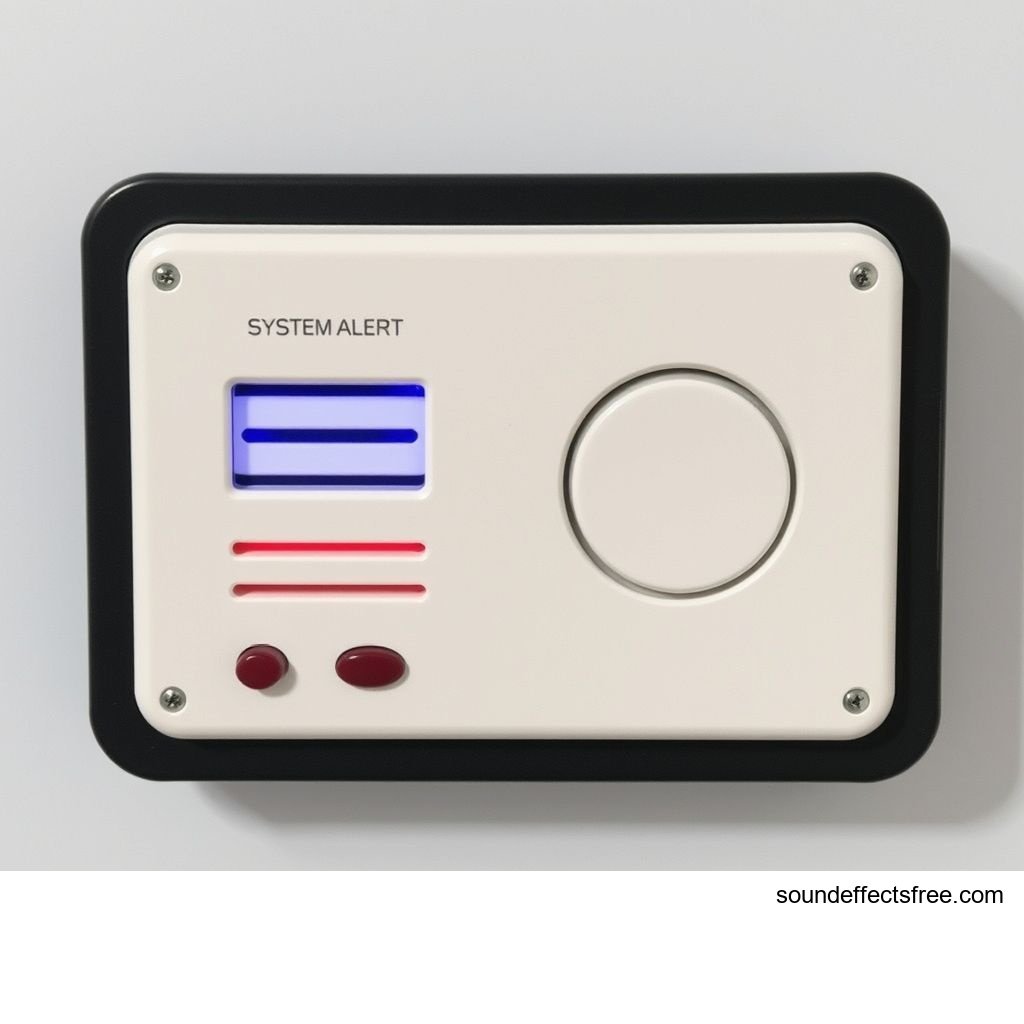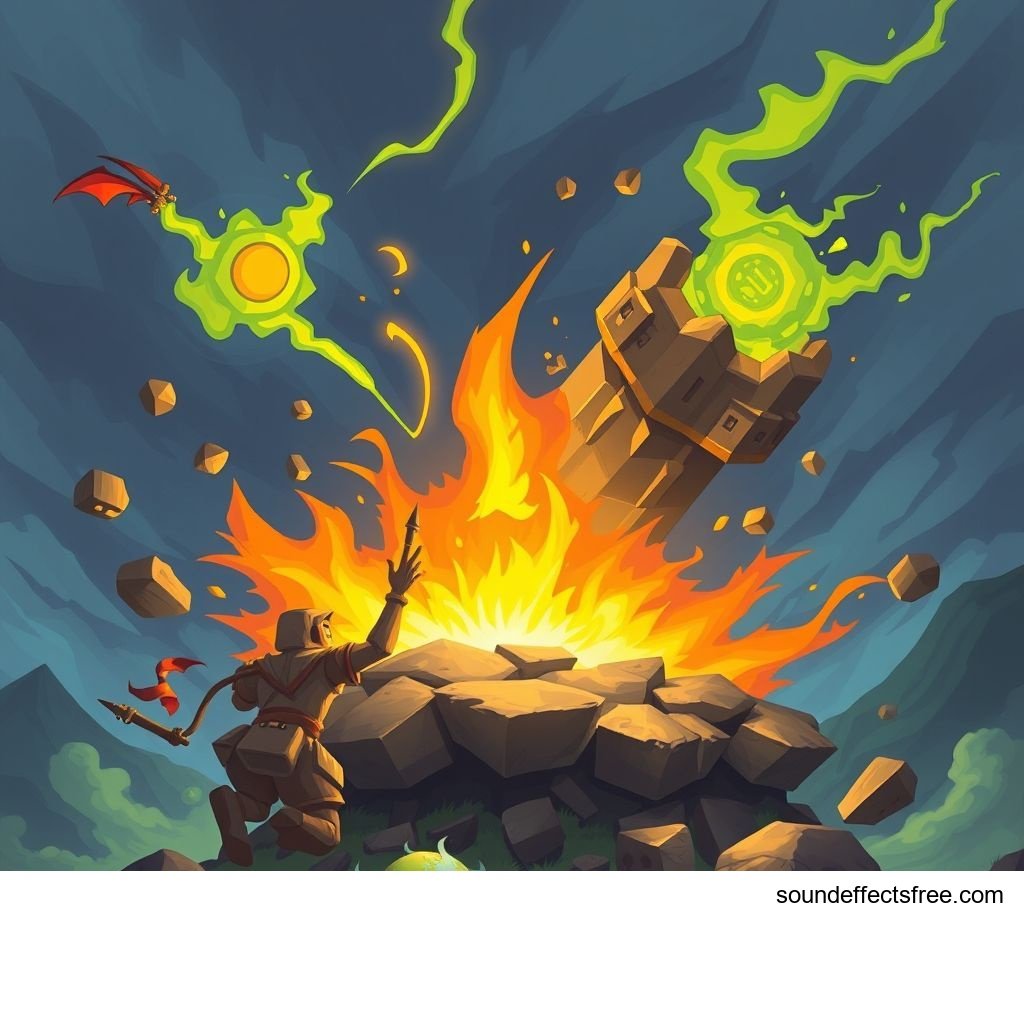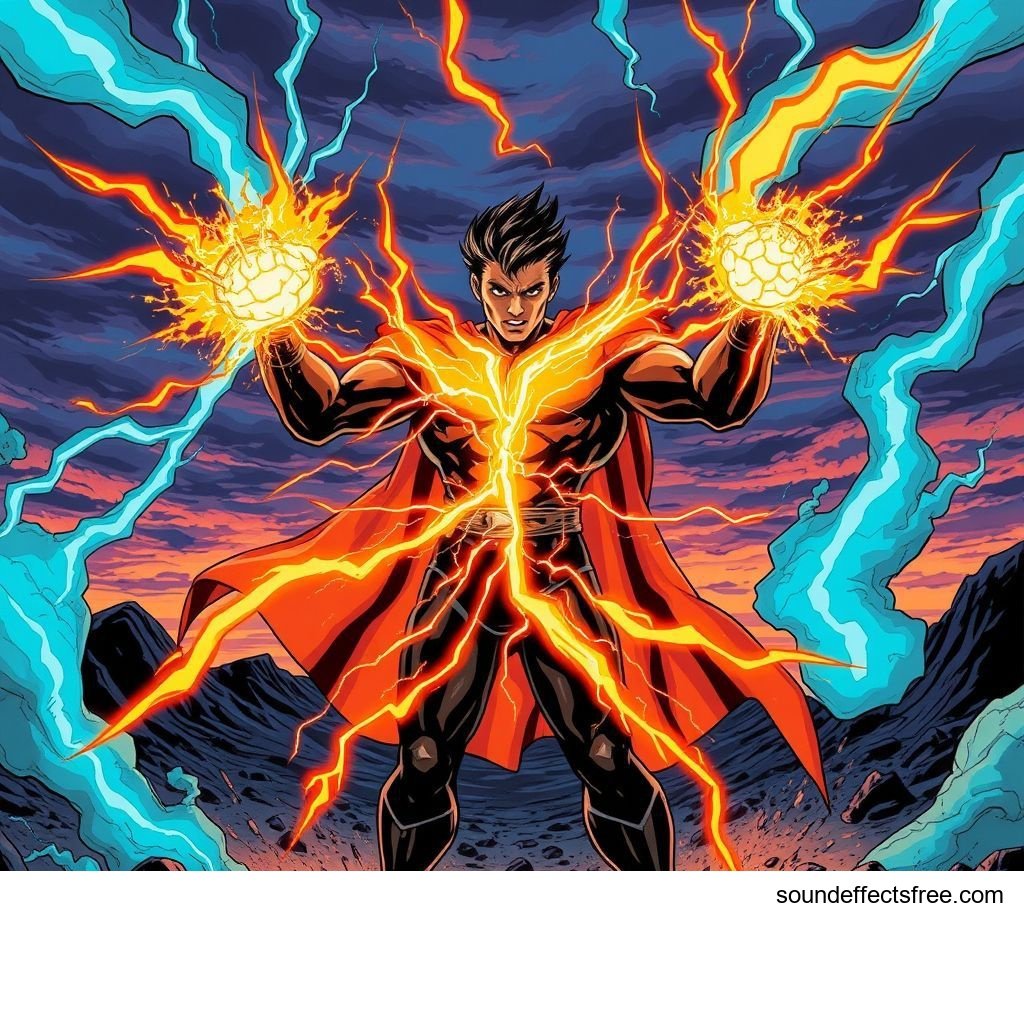Elemental Surge Hum
Uncover the power of the elemental hum in fantasy. Explore how this energy sound effect charges scenes with magic. Enhance your storytelling.
The elemental hum is a pivotal audio effect in modern fantasy. It instantly conveys power and mystical presence. This subtle yet profound sound adds depth to narratives. It signals a shift, a building tension, or the release of immense energy. Consider a scene where a wizard begins to charge a spell; a low, resonant hum begins. This auditory cue tells the audience something significant is happening. It prepares them for the magic about to unfold. An elemental hum can represent many things: the raw power of nature, a magical artifact activating, or a creature awakening. It is an indispensable tool for sound designers.
Applications in Media
The elemental hum finds its place across many media forms. It adds crucial layers of immersion. This powerful audio effect enhances various fictional experiences.
Industry-Specific Uses
In video games, the elemental hum often signals player proximity to a special object. It might mean a quest item is nearby. Or perhaps a hidden area holds powerful magic. For film and television, it can accompany visual effects. A character channeling energy will often emit an associated hum. This makes the visual charge more believable. In podcasts and audio dramas, the elemental hum must carry the entire weight of the scene. It helps listeners visualize the unfolding magic without visual cues. A constant, low hum might suggest a world infused with elemental power.
Creative Techniques
Sound designers use the elemental hum in various ways. They might introduce it subtly at first. Then it can grow louder and more intense. This builds dramatic tension. It implies increasing energy or a rising charge. The hum can also be modulated. Pitch shifts suggest changes in power. Volume swells indicate proximity or intensity. An elemental hum can act as a recurring motif. It helps link related spells or characters. It adds consistency to the soundscape.
Character Development
The elemental hum can define character abilities. A unique hum might accompany a specific character's magic. This sound instantly identifies their presence or power. It gives them an auditory signature. A character linked to fire might have a warm, crackling hum. An elemental ice user might have a cold, shimmering hum. These specific sounds reinforce their identity. They help the audience connect with their elemental abilities.
Environmental Immersion
A pervasive elemental hum can establish an entire world's atmosphere. Imagine an ancient forest resonating with a deep, earthy hum. This sound suggests a world alive with natural energy. A floating city might hum with arcane magic. This implies its very structure is powered by an elemental charge. These background hums make environments feel more vibrant. They immerse the audience in the fictional setting. The consistent hum builds a living, breathing world.
Technical Analysis
Understanding the technical aspects of an elemental hum is key. It helps in creating effective and impactful sfx.
Waveform Characteristics
An elemental hum typically exhibits a sustained waveform. It often lacks sharp transients. This means no sudden, loud peaks. The amplitude might fluctuate slowly. These gentle variations create a sense of organic movement. A stable waveform suggests a controlled energy flow. A more erratic one could imply unstable magic. The waveform can be smooth or slightly textured. This texture adds a subtle complexity.
Frequency Profile
The frequency profile of an elemental hum is crucial. Low frequencies (bass) convey weight and power. Mid-range frequencies add body and presence. High frequencies contribute shimmer or ethereal qualities. A deep, resonant hum often lives in the lower spectrum. This suggests a grounded, powerful elemental source. A high-pitched, shimmering hum implies light magic or spiritual energy. Layering different frequencies creates a richer sound sample. This makes the hum more compelling.
Psychoacoustic Impact
The elemental hum impacts listeners deeply. Low frequencies can evoke feelings of dread or raw power. They vibrate the chest. Higher frequencies can feel ethereal or foreboding. They create a sense of mystery. A rising pitch can cause anticipation. A falling pitch might suggest fading energy. These effects are subconscious. They make the audience feel the magic. The hum becomes more than just a sound. It becomes an emotional trigger.
Production Tips
Creating an effective elemental hum requires specific techniques. Both recording and software play a role.
Recording & Editing
To record a natural hum, use clean source audio. HVAC systems, old electronics, or even distant machinery can provide a base. Record these sounds in quiet environments. Use high-quality microphones. In editing, loop sections seamlessly. Remove any unwanted clicks or pops. Apply noise reduction carefully. Don't overdo it. You want to preserve the organic texture of the hum. Layering different recordings can add complexity. This creates a unique elemental sound.
Software Tools
Digital audio workstations (DAWs) are essential. Tools like equalization (EQ) shape the frequency profile. Compressors can even out the dynamics. Reverb and delay add space and depth. Pitch shifting can create variations. Synthesizers can also generate unique hums. They offer precise control over waveforms. Experiment with various plugins. Many effects can transform a simple tone into a powerful elemental presence. Pro Sound Effects offers great libraries.
Mixing Principles
Proper mixing integrates the elemental hum into the soundscape. It should complement, not overpower, other audio. Adjust its volume to fit the scene's intensity. Use panning to position the hum in the stereo field. This creates a sense of direction. Side-chain compression can duck the hum when dialogue occurs. This ensures clarity. Ensure the hum sits well with music and other sfx. A well-mixed hum is powerful yet subtle.
Creative Implementation
Beyond basic production, creative choices elevate the elemental hum. These methods add realism and impact.
Layering Methods
Layering is key for complex hums. Combine a low bass tone with a mid-range drone. Add a high-frequency shimmer. Each layer contributes to the overall elemental character. A rumbling, earthy hum could have a subtle magical whistle above it. This blend creates a rich, textured sound sample. It makes the hum feel more alive. Different layers can represent different aspects of the energy. Related elemental sounds can offer inspiration for layering.
Spatial Effects
Spatial effects place the elemental hum in the environment. Reverb makes it sound like it's in a large cave. Short delays can create a sense of movement. Doppler effects simulate passing objects. Use surround sound to immerse the listener. An elemental hum that moves around the listener feels incredibly powerful. It makes the magic feel truly present. The spatialization defines the hum's source.
Dynamic Variations
Varying the elemental hum over time adds realism. It should not be static. Introduce subtle wobbles in pitch. Change the filter cutoff to suggest waxing and waning energy. Randomize small volume shifts. These minor changes prevent the hum from becoming monotonous. They make the elemental force feel dynamic. A hum that evolves tells its own mini-story. This makes the magic more compelling.
Sound Pack Integration
Sound packs offer immediate access to professional elemental hums. They provide building blocks for your projects.
Using with Other Sounds
The elemental hum often forms a base layer. You can combine it with impact sounds for spell casting. Add whooshes for fast energy movements. Layer it under monstrous roars. For UI feedback, a subtle elemental hum can precede a click. This makes the interaction feel more magical. Consider combining it with UI Confirm Tap for a strong effect. The hum provides the foundation for the entire sound design.
Complete Collection
Investing in a complete sound pack offers versatility. You get various hums, charges, and energy effects. This allows for diverse elemental magic applications. A comprehensive collection saves time and effort. It ensures high-quality sound samples for every project. A robust library supports all your creative needs. It provides the full spectrum of elemental sfx.
Get the full sound pack for comprehensive audio solutions.
The elemental hum is more than just a sound. It is a storytelling device. It conveys power, magic, and hidden energy. Mastering its use will elevate your narratives. From subtle presence to surging charge, the elemental hum adds depth and immersion. It truly helps bring fantasy worlds to life.
FAQ Section
Q1: What is an elemental hum in sound design? A1: An elemental hum is a sustained low-frequency sound effect. It conveys power, magic, or the presence of a mystical energy. It often builds anticipation.
Q2: How does an elemental hum enhance fantasy storytelling? A2: An elemental hum immerses the audience. It signifies magic at work. It helps portray a sense of building energy or a magical charge. It makes fantasy elements feel real.
Q3: What are common uses of elemental hum sfx in media? A3: Common uses include signaling activated artifacts, character abilities, or powerful spells. It can also create an ambient sense of elemental energy in environments.
Q4: Can an elemental hum be custom-made? A4: Yes, an elemental hum can be custom-made. Sound designers use software, recordings, and synthesis. They manipulate frequencies and add effects. This creates unique elemental audio effects.
Q5: What technical aspects define a good elemental hum sound sample? A5: A good elemental hum has a stable waveform and a rich frequency profile. It should be free of harsh transients. Good sfx will often have subtle dynamic variations too.





